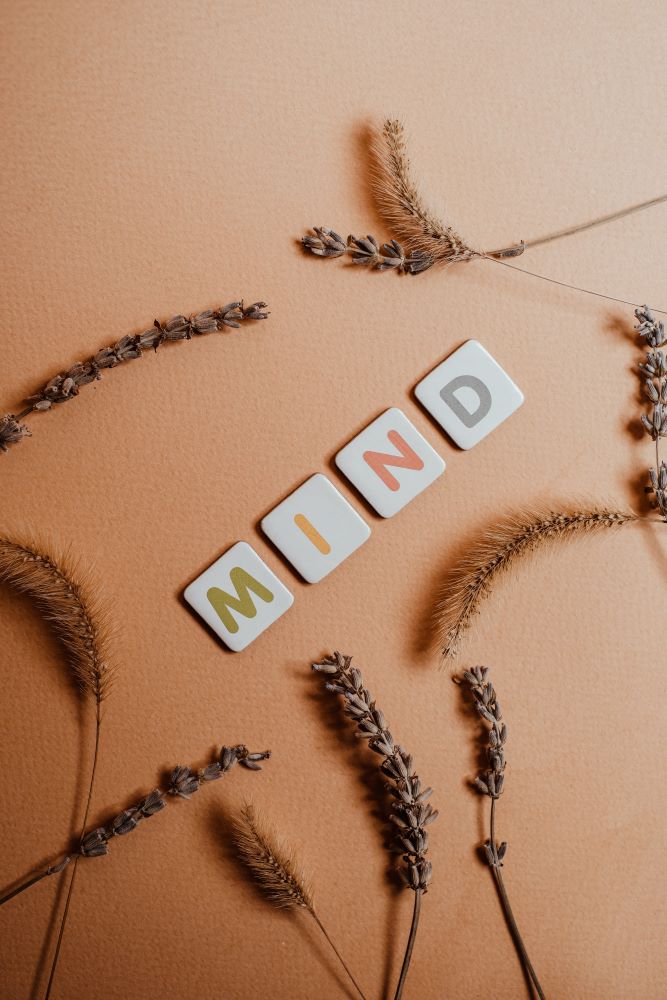If you’re familiar with DBT at all, you’ve probably heard of WiseMind. This skill is all about harnessing your inner wisdom and acting effectively from that wisdom. WiseMind is bringing the left and right brain together to find the “middle path.” To understand WiseMind, it’s best to consider the 3 states of mind it proposes: Reasonable Mind, Emotion Mind, and WiseMind.
 When in Reasonable Mind, we are ruled and driven by facts, logic, and tasks, emotions are not taken into account. When in Emotion Mind, we are driven by our moods; logic and facts are not considered. WiseMind is the middle path, where we consider both how emotions and logic play a part in a situation or transaction. When in WiseMind, we tend to feel “free of conflict” and centered. For example: if I were extremely excited to buy a new car and my excitement drove me to not consider the cost or any other facts, I would be in emotion mind. If I continued to focus on my work, despite various pangs of hunger, thinking ‘I just have to finish this,’ without stopping for a break for hours, I would be in reasonable mind. In a situation where I am so happy to see a friend from out of town that I almost clear my entire work schedule, yet I consider how this would affect my colleagues at work and increase their stress, I compromise with my friend to work around my schedule, I would be in WiseMind. This is a brief summary of the skill, I would encourage you to seek out our other blogs, and/or your therapist can assist in increasing your understanding of this skill if you are not already familiar with it.
When in Reasonable Mind, we are ruled and driven by facts, logic, and tasks, emotions are not taken into account. When in Emotion Mind, we are driven by our moods; logic and facts are not considered. WiseMind is the middle path, where we consider both how emotions and logic play a part in a situation or transaction. When in WiseMind, we tend to feel “free of conflict” and centered. For example: if I were extremely excited to buy a new car and my excitement drove me to not consider the cost or any other facts, I would be in emotion mind. If I continued to focus on my work, despite various pangs of hunger, thinking ‘I just have to finish this,’ without stopping for a break for hours, I would be in reasonable mind. In a situation where I am so happy to see a friend from out of town that I almost clear my entire work schedule, yet I consider how this would affect my colleagues at work and increase their stress, I compromise with my friend to work around my schedule, I would be in WiseMind. This is a brief summary of the skill, I would encourage you to seek out our other blogs, and/or your therapist can assist in increasing your understanding of this skill if you are not already familiar with it.
So, with your understanding of this skill and hopefully, your practice of it, you have been able to experience how helpful WiseMind can be. I have found WiseMind to increase my awareness of ineffective behavioral patterns, better decision-making, and slow down my reactions. Despite many years of practicing this skill as well as teaching it, it still can be difficult to harness and act from it. There are many reasons as to why this is, let’s explore them.
Too High of Emotional Dysregulation:
In DBT, we often use a scale of emotional intensity from 0 to 100. You may hear it referred to as “SUDs” or Subjective Units of Distress. Consider 0 to be when you are asleep and 100 to be the most distressed you’ve ever been. A good way to visualize this scale is a thermometer. If you are at an emotional intensity of 70 or higher, you will not be able to act from your WiseMind. This is not due to any fault of your own, this happens to any human experiencing emotional intensity at this rate. This is due to how our brain functions. When at 70 or higher, you are no longer able to access the cognitive portion of your brain and your emotions take over. If you can get your distress lowered, you will be more likely to get into WiseMind. Sometimes, utilizing WiseMind practices can assist you in de-escalating.
Biological Vulnerabilities:
If you weren’t aware, our bodies and our mental health influence one another. We have a “brain/body” balance so to speak, and when we neglect to attend to our biological needs, our emotional regulation can be difficult to manage. When we get too much or too little sleep, eat too much or too little, we can actually be more likely to experience emotions more intensely or emotions we might not if we had attended to these. Without appropriate movement and attending to our health (going to the doctor when ill or injured, taking prescribed medications, menstruation, chronic illnesses, etc), we can also become more emotionally vulnerable. Consuming mind altering substances such as illicit drugs, taking non-prescribed prescription medications, caffeine, nicotine, alcohol, etc, can also influence your mood and behaviors. Inattention to any of these could put your abilities to get into WiseMind more difficult.
You Can’t Be In WiseMind All the Time:
Lastly, I think it’s important to remember that there is NO WAY for you to stay in WiseMind constantly. You’re human, you have a central nervous system that gets bombarded with information and environmental influences (biological and social) on a daily basis, it’s impossible to be 100% all the time. When in a DBT skills group, we revisit WiseMind as a skill to learn 4 times within 24 weeks. This is because it takes much practice and mindfulness to implement. The practices discussed in the DBT skills manual are to get you familiar with what it feels like to be in WiseMind. It would be hard to utilize this skill and know when you truly are in WiseMind if you are not familiar with how your mind thinks, how your body feels, and what methods you, specifically, need to use to get there.
WiseMind is a state of mind, just like reasonable and emotion mind. You are not in either state of mind “all of the time.” I’ll share a metaphor I like to use to remind myself, and also not blame myself, when I’m not in WiseMind, did not act from it, or went against my WiseMind – WiseMind is like a light switch, we want to learn when to turn it on when it’s dark, and sometimes, just to make sure we saw things correctly the first time to double check our work. If we left the light (WiseMind) on all the time, the energy cost would get quite high and might burn out the light bulbs at some point.
There are various other reasons as to why WiseMind may be difficult for you to act from or access, some were not listed here and some are more complex. The best advice I can give to you is to refer to the WiseMind practices frequently and incorporate them into a routine you already have. Practice as often and in as many contexts as you can. The more you practice, the more you will be able to turn on your lights when you need them and create more of the reality you’d like to experience.
About the Author
Alyssa Eichhorn (she/her), M.A., LPCC, is a Licensed Professional Clinical Counselor who specializes in dialectical behavior therapy. Alyssa works with all ages in a radically genuine and nonjudgmental setting to help individuals identify more effective and balanced behaviors to create a life worth living. Alyssa provides a directive and warm approach with her clients to facilitate solutions, growth, and change where they want it. Click here to learn more about Alyssa and her therapeutic approach.
Sources:
Linehan, M. M. (2015). DBT® skills training manual (2nd ed.). Guilford Press.
https://drdansiegel.com/hand-model-of-the-brain/
https://youtu.be/-uOGRaTaVv4?feature=shared



